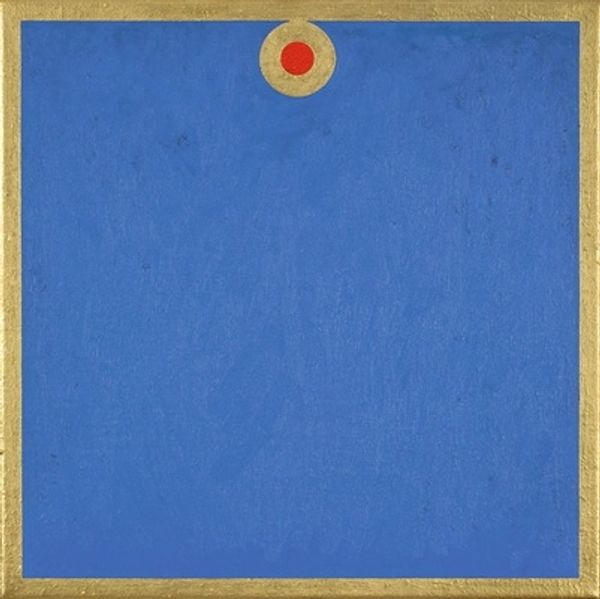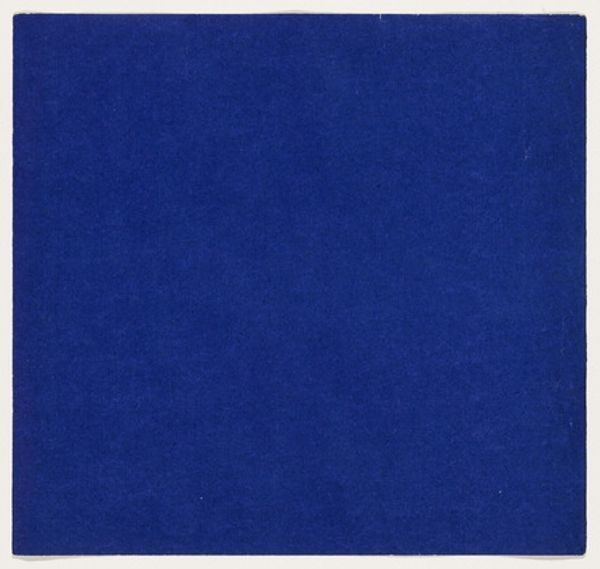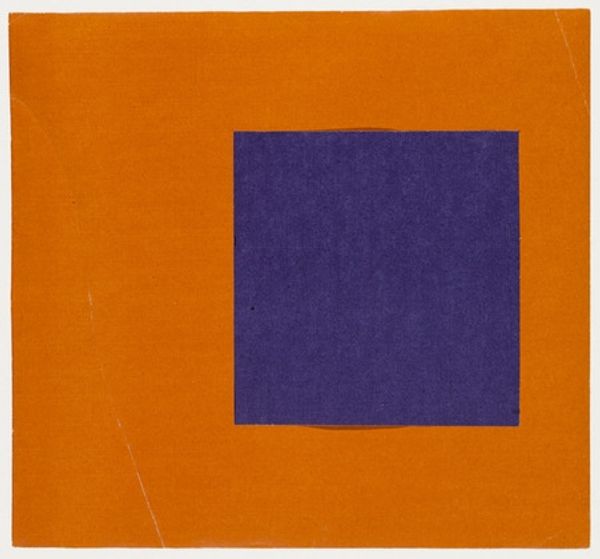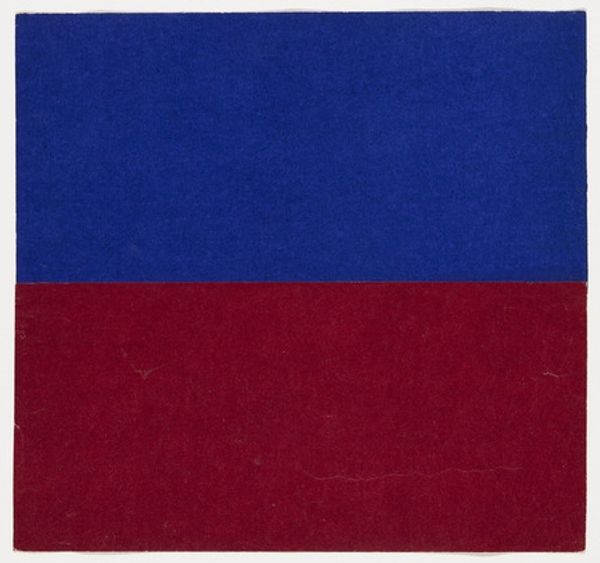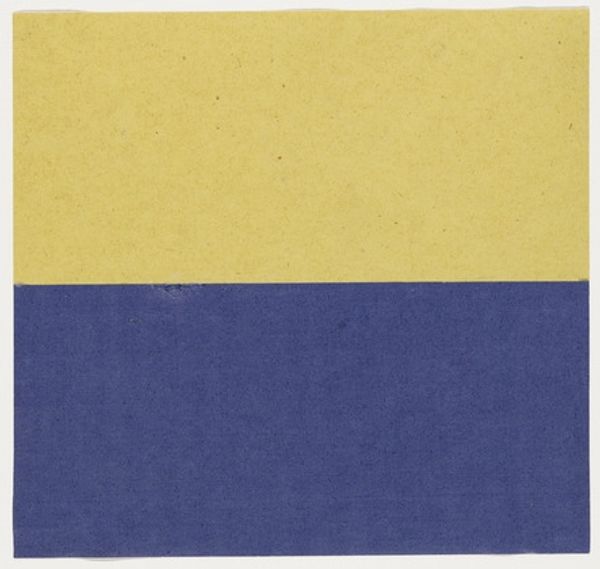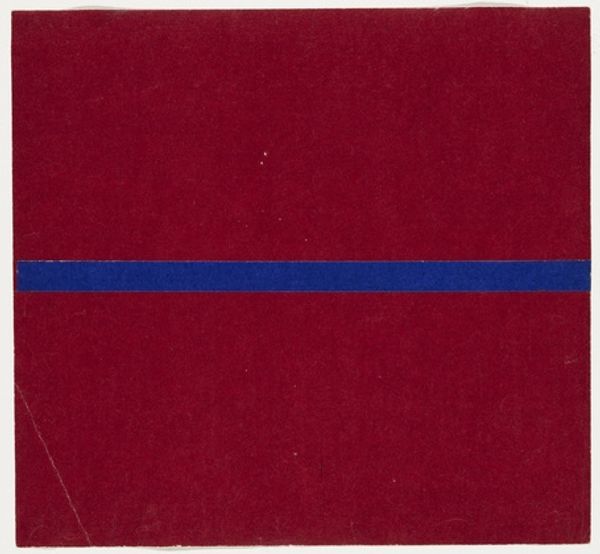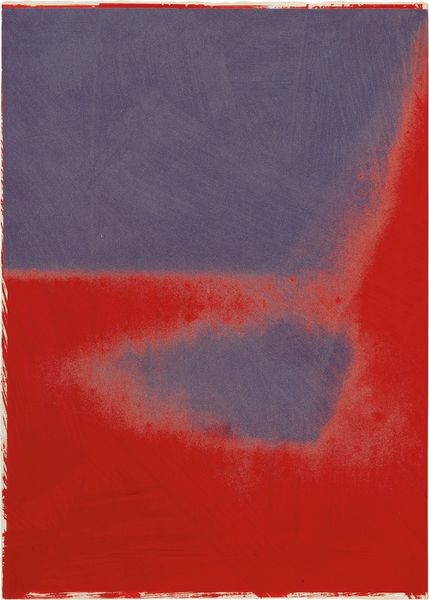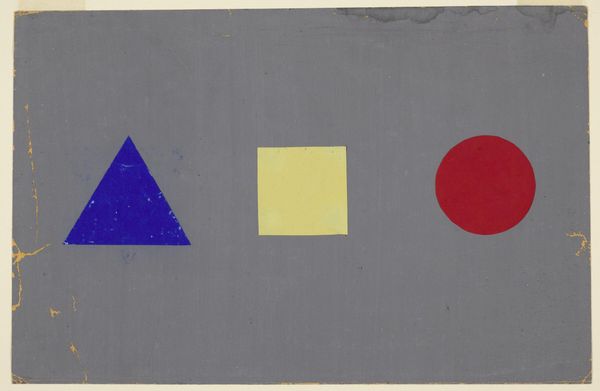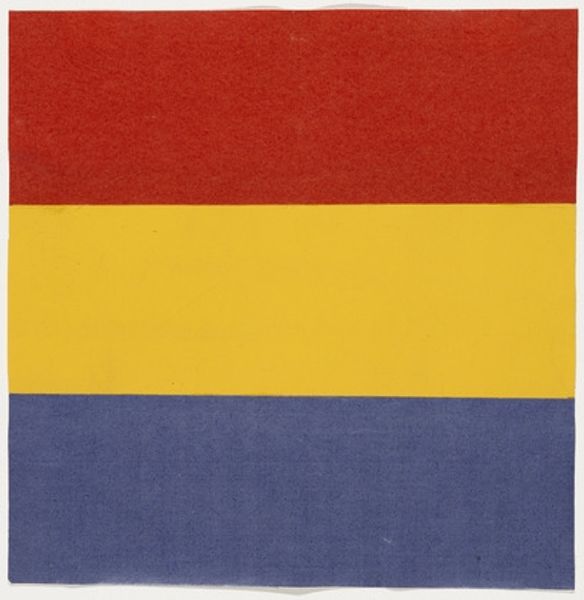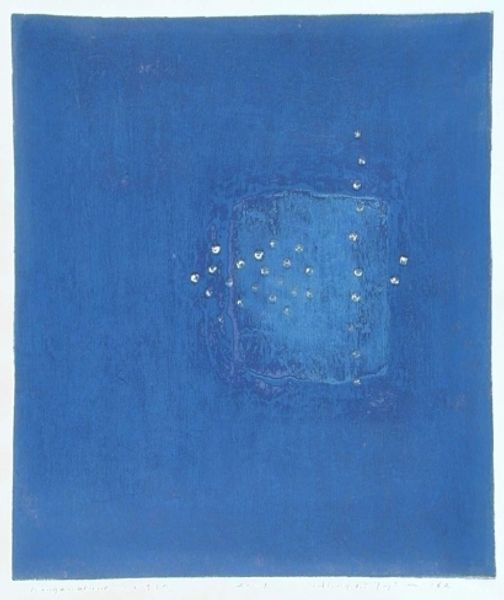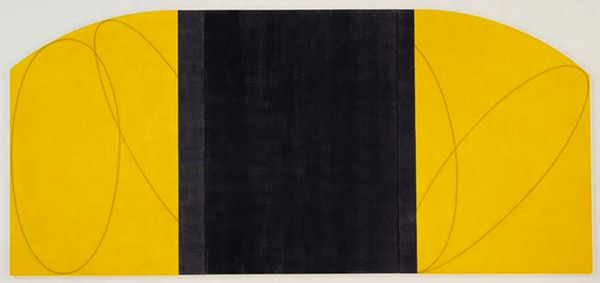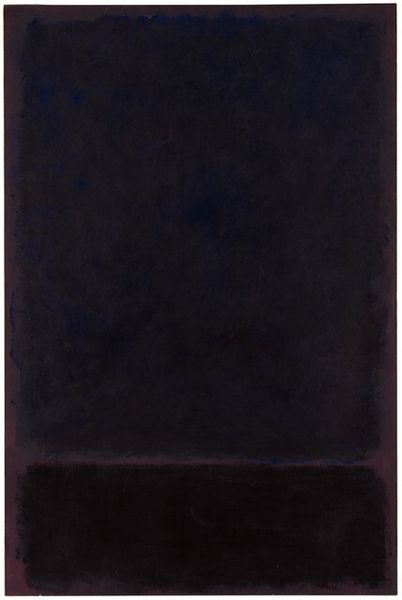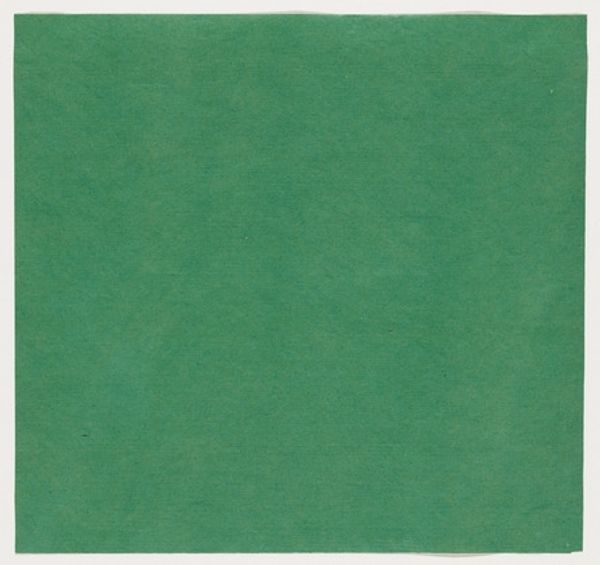
painting, acrylic-paint
#
painting
#
circle
#
colour-field-painting
#
acrylic-paint
#
geometric
#
abstraction
#
modernism
#
hard-edge-painting
Copyright: (c) Ellsworth Kelly, all rights reserved
Editor: So here we have Ellsworth Kelly's "Red and Blue" from 1951, an acrylic on canvas. It's so simple, just a red circle against a solid blue background. It gives me a feeling of stillness, but there's also something almost confrontational about it, like a minimalist flag. What do you see in this piece? Curator: What strikes me is how this seemingly straightforward geometric abstraction actually pushes against the accepted norms of its time. Post-war art was still dominated by certain perspectives, particularly ideas rooted in Eurocentric frameworks. How does Kelly, an American artist, engage with this dominant ideology by stripping down painting to its most basic components: color and form? Editor: So it's a deliberate act of defiance, simplifying form, perhaps in order to democratize visual art itself? Curator: Exactly! Consider the sociopolitical context: the Cold War era and anxieties about conformity. Kelly's "Red and Blue" isn't merely about aesthetics; it's an assertion of individual agency, a call to deconstruct established hierarchies. It demands that we look beyond what we think we know about painting. It is meant to be experienced and not analyzed or intellectualized to a large degree. Does the positioning of the red circle on the canvas perhaps make a statement? Editor: It’s placed away from the center, almost as if floating, independent of the field. Curator: Precisely! That spatial relationship, that tension, it mirrors the individual’s place in society, doesn’t it? An invitation to forge your own path, perhaps. What do you make of the relationship between hard-edge painting and other political events that surrounded the civil rights movements, queer movements, second-wave feminism etcetera? Editor: I'm now viewing his works as powerful interventions rather than simply colour and form; they're statements about autonomy. I hadn't considered the political aspect initially, it definitely adds depth. Curator: Absolutely. Abstraction itself became a space for marginalized voices, wasn’t it? It created room for new subjectivities, offering a rejection of dominant modes of representation.
Comments
No comments
Be the first to comment and join the conversation on the ultimate creative platform.
